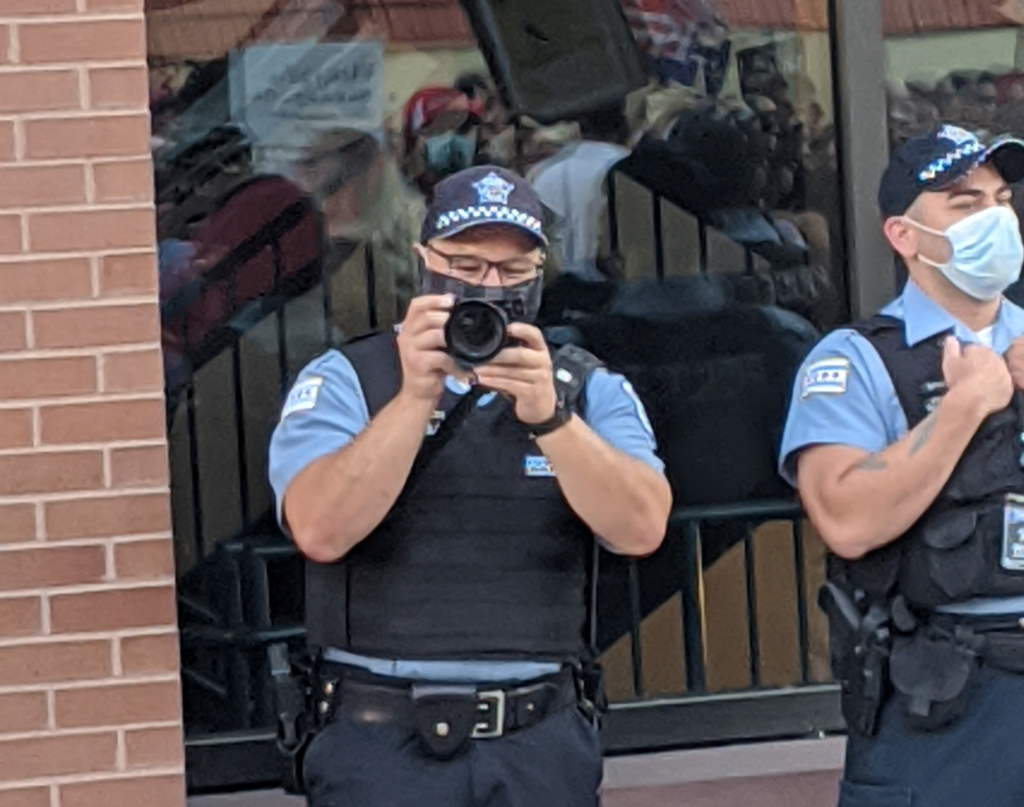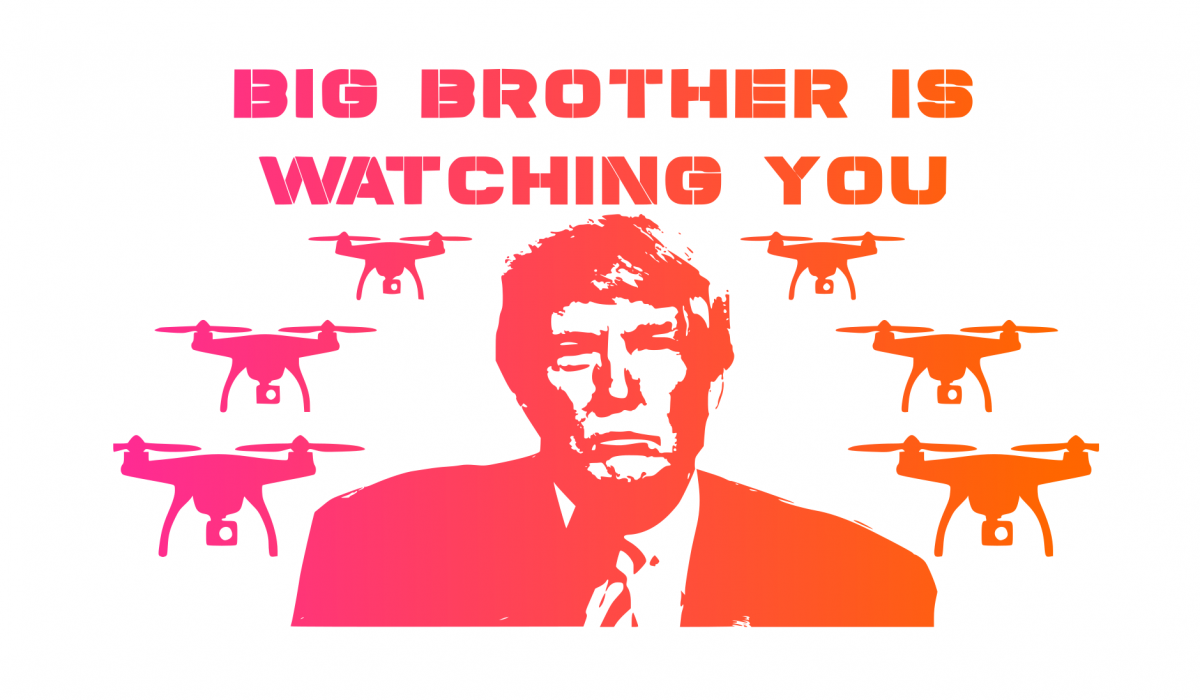Full blown authoritarianism takes many forms, which makes it difficult to define. Still, oppressive regimes historically share common characteristics. They all control their populations actions and thoughts through a mix of surveillance, propaganda, and violence. Most are all ruled by a single individual or small group of elites who lie, cheat, intimidate, and use brute force if necessary to maintain power. Undemocratic governments around the world are arming themselves with powerful technology. This enables mass oppression with an efficiency that the murderous dictators of the 20th century could only have dreamed of.

I recently took a close look at the particular question of aerial drone surveillance and how it can become a powerful tool for oppression. Here’s what I’ve learned.
It is important to remember that the U.S. Constitution safeguards against authoritarianism in two ways. First, it divides and limits the powers of the government. Second, it explicitly names several rights belonging to every individual. The government is forbidden from violating these rights, one of which is our Constitutional right to privacy. Privacy is crucial to the free exchange of ideas. Without it, we risk self-censorship by limiting our thoughts and actions to those deemed acceptable by the regime. Once the modern surveillance tools are entrenched and accepted by a population, it's merely a matter of, "flipping the switch," from the psychological influence of an all-seeing eye to the outright oppression of an iron fist.
The tools available to the modern surveillance state are immense and precise. These technologies include smart networks of thousands of cameras, mass capture of phone and internet data, ubiquitous facial recognition, automatic tracking of every license plate on public roads, and missile-launched drone swarms called LOCUSTS that can both perform surveillance and deliver explosive payloads. These technologies are already widely used in China as it methodically perfects the art of totalitarianism in the 21st century. At the same time, U.S. law enforcement agencies are procuring Chinese equipment and - presumably - training in how to use these tools of oppression.
Exactly how these technologies are deployed against the American public is shrouded in secrecy. In Chicago, the police have a long history of spying on citizens. They’ve used signal intercepting technologies to spy on the cell phones of peaceful organizers. They've tortured an unknown number of people at a secret black site. They maintain a controversial “gang database” to track people and their relationships with near-zero transparency. At a recent protest, they formed a ring around demonstrators and then ordered them to disperse – a tactic called kettling. Eventually, they forced every protestor to exit through a narrow opening in the wall of police, taking video and searching their bags as they left. The chilling effect these techniques have on free speech and expression threaten the foundations of our free society.
Unlike many states, Illinois does have a law intended to protect our privacy rights from aerial surveillance. The law bans the use of drones by law enforcement except for specific situations: to counter terrorism, if they have a warrant, if they have reasonable belief that quick action is needed to prevent harm, if they are looking for a missing person, or if they are using it for crime scene or traffic crash scene photography. It is easy to see how these exceptions could be broadly interpreted to make the ban meaningless. We have no reason to presume the Chicago Police Department, which has failed to meet 70% of its deadlines under a Federal Consent Decree, would exercise restraint in this area. The law also has a reporting requirement, but this appears to be openly flouted by law enforcement agencies as well.
Specifically, the law requires every law enforcement agency in Illinois to report the number of drones they own to the Illinois Criminal Justice Information Authority. This agency, which consists mainly of law enforcement and court officials, is required to publish an annual report detailing which law enforcement agencies own drones and how many. Surprisingly, of the 877 law enforcement agencies in Illinois, only 20 reported owning a drone in the 2020 report. Considering the potential usefulness for law enforcement, it seems highly unlikely that so few law enforcement agencies are using drones. I requested clarification from CPD on twitter:
Why doesn't @chicago_police report the number of drones it owns @ICJIA_Illinois? State law requires law enforcement agencies to report and ICJA publishes information annually here: https://t.co/rvsRNgf8e6 .. Is CPD exempted for some reason? @chicagotribune @Suntimes
— Brian Burns (@BurnsUSA) July 3, 2020
After getting no reply, I forwarded the question to several local elected officials (please like and retweet if you want answers too!):
Serious question to my elected officials (or anyone else with knowledge): Why doesn't CPD report the number of drones it owns? @48Ward,@SAKimFoxx,@chicagosmayor,@KwameRaoul,@RepKellyCassidy, @HeatherSteansIL https://t.co/Ct9XjAR93W
— Brian Burns (@BurnsUSA) July 4, 2020
One of them replied, and looped in the expert from our state legislature. The expert never replied, but my state representative did put this on her to-do list

This seemed too important to wait around on, so I made use of the Illinois Freedom of Information Act (“FOIA”). Like many states, Illinois’ FOIA allows citizens to request records from government agencies. I filed a FOIA request with the Chicago Police Department on on July 30. The law requires agencies to reply within 5 business days unless they have a legally justifiable reason for an extension. Almost immediately, the CPD responded that they were extending their deadline by a week due to Covid. When the first week passed, they extended their deadline again in order to consult with another public body having a substantial interest in the request. 21 days later, I received their reply. The reply stated that CPD had no responsive records, and instead directed me to the Federal Aviation Administration (“FAA”) and the Chicago Department of Aviation. This was the first time I’ve ever used the FOIA process, and while I have not yet received the substantive answers I was looking for, I have learned a lot. I will post an update when I get more information, but for now here are my important takeaways so far:
First, it seems highly unlikely that CPD is not using drones. A simple “no” does not take three weeks to formulate and does not require conference with other agencies. The FAA has a Law Enforcement Assistance Program (“LEAP”) that appears to be geared toward helping law enforcement agencies formulate and implement drone policies. More research is needed, but as of now, I would be very surprised if CPD were simply not using drones at all.
Second, the gaps in a poorly written law can make it useless. Illinois’ Freedom From Drone Surveillance Act does not apply to federal agencies like the FAA, FBI, or DHS. It does not prohibit law enforcement in Illinois from using information gathered by the feds or from non-law enforcement agencies like the Chicago Department of Aviation. The reporting requirement only applies to law enforcement agencies that own a drone. It does not take much creativity to imagine how this law could become worthless as a practical matter. Laws purporting to protect our privacy must keep pace with technology. If they fail to do so, they are toothless distractions that create a false sense of security. We cannot afford to be distracted.
Third, the separation of powers is only useful if each branch is playing an active role in protecting our rights. Police without oversight don’t protect our rights. Laws without enforcement don’t protect our rights. Politicians who fail to act with the urgency this moment demands certainly don’t protect our rights.
Authoritarianism in the 21st century will not take the same form that our founders fought a revolutionary war against. It will not require an explicit moment where all government powers pass to a single person, such as the Enabling Act did for Hitler prior to WWII. It can happen in the shadows of ambiguity. As governments around the world begin to leverage technology to build the police departments of the 21st century, we must be explicit about what is acceptable in a free society and what is not. We must be vigilant to ensure this historical moment does not slide into authoritarianism. We cannot afford to have any of us asleep at the wheel right now.
Tweet
